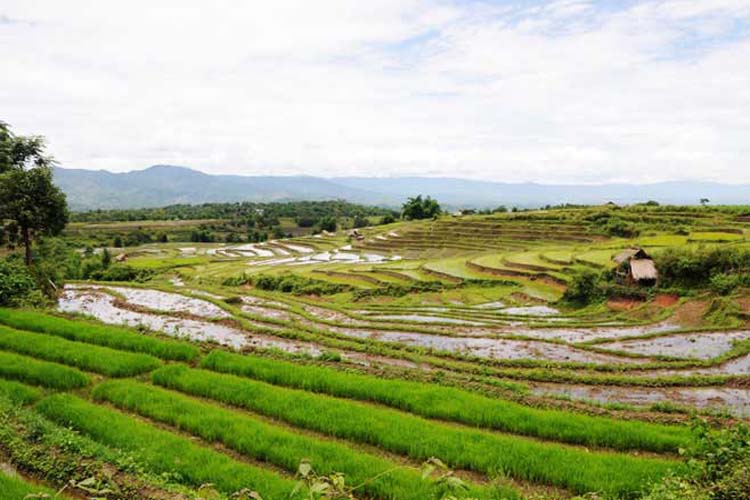Kyaing Tong is known for its scenic beauty and many colorful ethnic tribes. Places of interest around Kyaingtong are, the Spa, Naung Tong Lake, Sunn Taung Monastery, Central market and Traditional Lacquer ware works and weaving factory.
There are many villages of various ethnic tribes resided around Kyaing Tong. The tribes known as Gon, Lwe, Li, Wa, Lah Hu, Thai Nay, Shan, Li Shaw, Li Su, Palaung, Akha, and we can only differentiate the tribes by colourful dresses which is different to one another.
Can observe their tribal dances and their way of living on these mountainous regions around Kyaing Tong. Situated in the eastern Shan State and 452 km from Taunggyi and 176km from Tachileik.
This was my second visit to Kyainge Tong , the principal city of Shan State (East) and the second golden opportunity to pay homage to the Maha Myat Muni Image of Kyainge Tong Members of the Board of Editors of the Myanmar Perspectives magazine had set out on a study tour of Tachilek and Kyainge Tong through the kind offices of the authorities concerned and had arrived in Kyainge Tong from Tachilek on the afternoon of December 27, 1997. The Maha Myat Muni Pagoda was just around the corner from the Kyainge Tong Hotel, so a group of us walked there after dinner. The pagoda or temple to put it more accurately, though not located in the heart of town, reminded me of Sule Pagoda because it stands encircled by a good motor road and motor cycle traffic was heavy. But once you entered the prayer hall of the Maha Muni Image the atmosphere is tranquil and one can meditate and pray in peace. The walls and ceiling of the hall are resplendent with ” Shwezawa” (gold lacquer) decorations yet it was not so lavish as to offend the eye. Then wemet some members of the Board of Pagoda Trustees who welcomed us warmly and were each given an information booklet in English on the history of the pagoda. We met the translator of this booklet from the Shan to English Sai Loang Gyi and at his request I would like to recount to our readers the legend which led to sculpture of images in kingly robes as well as the origin of the Maha Muni Pagoda – a noble and serene effigy of the Lord Buddha.
In 1926 the Buddha Image was moved from the temporary thatched Vihara to the present building. This new Vihara had a roof of teak wood shingles with a ceiling of thick planks. A brick wall was also built to enclose the precincts. In 1938, it was again renovated and the roof replaced with a splendid tapering nine-tiered roof. The inside walls were also elaborated with froral designs. The donor was the then Mahadevi of Kyainge Tong.

